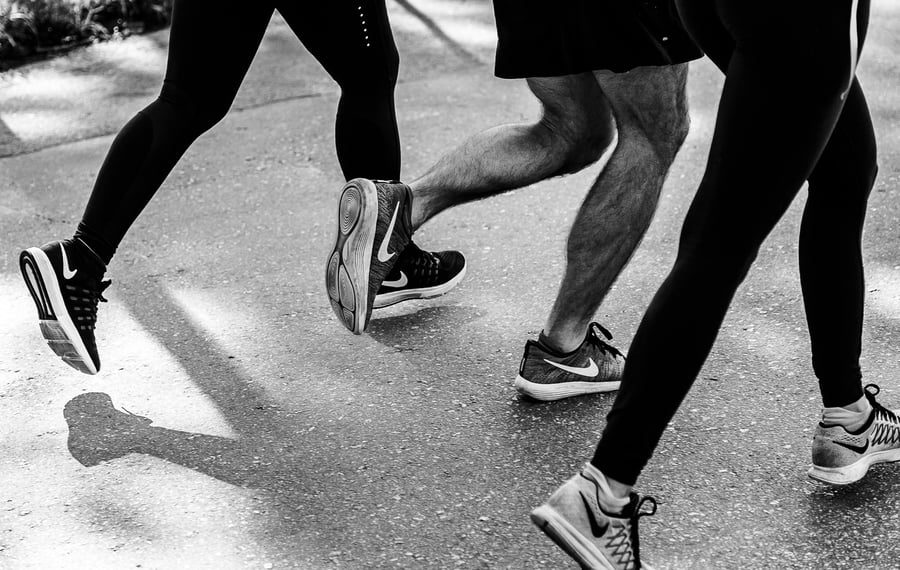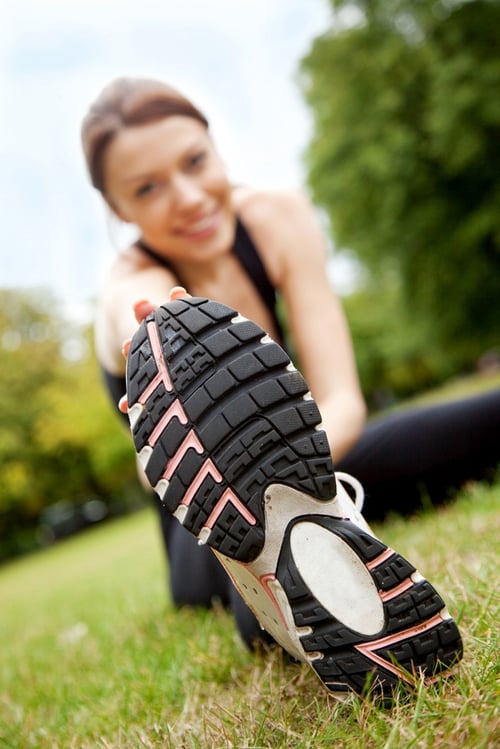
If you log more than 30 miles per week of running, you’re probably familiar with that unsightly foot condition known as “runner’s toe.” The medical name for this repetitive traumatic injury is subungual hematoma, and it also plagues skiers, tennis players, dancers and fast walkers.
The condition is characterized by a reddish-black or blue discoloration of the toenail, typically on your longest toe. This is caused by bruising and blood pooling underneath the nail plate. Sometimes the toenail will separate from the toe bed, and your discomfort may range from slight to serious pain.
What causes runner’s toe?
This condition is caused by repeated downward pressure that jams your toes against the front of your shoe. Distance or competitive runners with a lot of downhill time are good candidates, as are people who pronate excessively. Both too-tight and too-loose shoes can contribute to the development of runner’s toe, so finding the right athletic shoe fit is key to avoiding the condition.
When shopping for new running shoes:
- Try them on in the evening when your feet are swollen from the day. Be sure to wear your standard running socks.
- Choose running shoes that are one-half to a full size larger than your regular shoes.
- Make sure your longest toe is not hitting the end of the shoe.
How to treat runner’s toe
Many times this condition will ease up on its own and the nail will eventually fall off and will be replaced by a new one. To expedite your healing:
- Take a day or two of rest from all athletic activity, and soak your foot in warm Epsom salt baths.
- Clip your toenail so that it doesn’t make contact with your shoes or snag on your socks, but don't pull it off.
- Wear a shoe with a wider toe box to give your toe more room and prevent further irritation.
- Protect a partially torn toenail with tape until a new nail begins to form.
If your discomfort turns to pain and you experience any loss of feeling in the area or see signs of infection, such as redness around the cuticle or swelling, it’s time to seek medical help. Runner’s toe can develop into a fungal or bacterial infection in the nail. If left untreated, a fungal infection can permanently disfigure the nail and spread to other healthy nails. People with diabetes or poor circulation in their legs and feet should seek medical attention at the first sign of runner’s toe.
How to prevent runner’s toeIn addition to wearing the appropriately sized athletic shoe that provides plenty of clearance for your longest toe, follow these tips to prevent runner’s toe:
- Keep your toenails cut short. Trim them regularly and straight across. Long or pointed nails are more prone to damage due to the constant banging against your shoe.
- Keep your feet as dry as possible. Exercise in properly sized socks made from moisture-wicking materials such as merino wool, polyamide and elastane, and other synthetic materials. Avoid cotton, which retains moisture.
- Lace your shoes more tightly if you do a lot of downhill running or walking. This helps to prevent excessive foot movement and friction.








